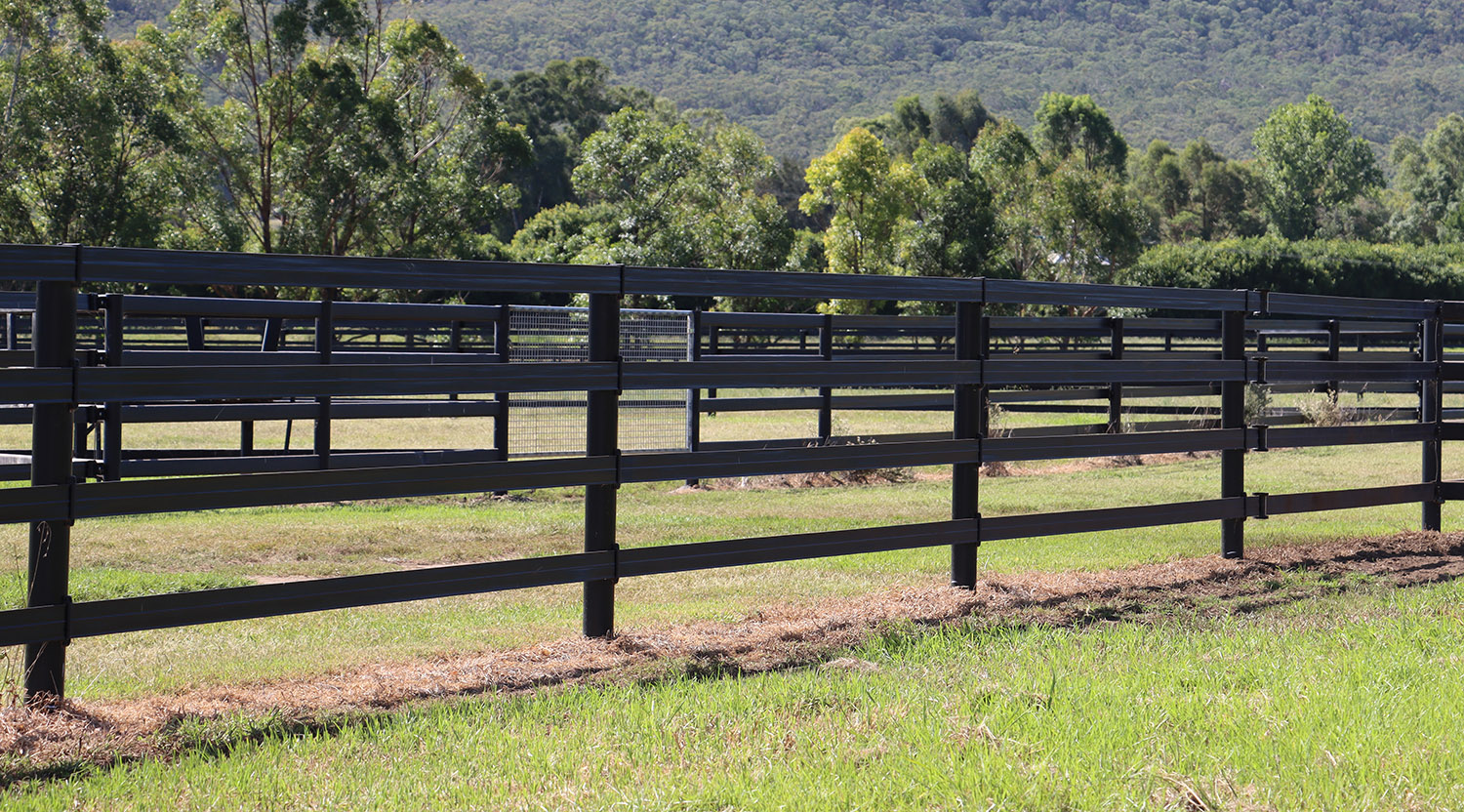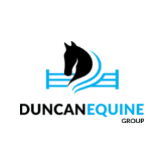When we think of the quintessential equestrian property, many of us imagine rolling hills covered in black or white wooden post and rail fencing. Undoubtedly beautiful, this traditional style of fencing gives a charming finish but unfortunately comes with a number of ongoing issues.
…What if we told you that you could achieve the same fencing look, with modern materials that require little to no maintenance? The Duncan Equine team has been in the fencing business for over 30 years, so we’d like to share our wealth of knowledge with you and help you make the most practical choice for your equestrian property.
Here are our top ten most common problems encountered when fencing with timber post and rail fencing:
1. Rotting
Whilst wood is a very versatile material, it’s unfortunately prone to rot. Over time, wet conditions, moisture coming up from the ground or rain will break down the integrity of your posts and panels. Stallion Rail is specifically created with a medium-density polymer, which means it will last for years and won’t be affected by rain or rot.
2. Warping
There’s no doubt that post and rail horse fencing looks great when it first goes in, but wood will expand and contract depending on the weather conditions. Wooden railing can bend, warp and even crack when it is continually drying out and becoming wet over and over. Water cannot make its way into the material of our Stallion Rail or PVC fencing posts, which are designed to withstand the toughest Australian conditions and will last and last.
3. Continual painting
Black or white fences offer a very visually pleasing finish to your property, but if you’ve ever had them before you’ll know they won’t last! Fence stain fades over time in the sun, while fencing paint peels and wears off, leaving your once polished fencing set up looking decidedly shabby. Our PVC posts and Stallion Rail come in either black or white and NEVER require painting. Once they’re in, the colour will stick, saving you serious money or time on the labour-intensive task of painting (and repainting) your fences.

Stallion Rail doesn’t need painting
4. Termites
Unfortunately, wood ant is another problem you’ll need to consider when using wooden fencing on your property. Wood is the food source and home of termites, which can nest in the middle of a fence post or plank, degrading your fence from the inside out before you’ve even noticed them. Even worse, a termite infestation in your fencing also puts your other infrastructure at risk, like your nearby stables or home.
5. Chewing
Most of us will have experienced the frustration of a horse that chews fences! Wood can be very tempting for windsucking or cribbing horses who’ve developed a habit. Not only will this behaviour destroy your wooden posts and railing but could also result in harm to the horse. The PVC material of our posts won’t splinter or break apart like wood and is less appealing for horses to chew. Our Stallion Rail products also come in an electrified version, so you can avoid chewing altogether, whilst still maintaining the neat look of railing with no obvious or dangerous wires.
6. Mould and Moss
Wood is more permeable than the specially chosen, medium-density polymer used to create Stallion Rail, which means it’s prone to developing moss or mould growth. Not only does this detract from the overall look of your fencing, but it can also pose a health risk for your horses.
7. Horse Injury
Wood has more propensity to shatter or splinter with a hard impact, such as a boisterous horse playing in the paddock, or sliding into a fence in wet weather. This obviously brings a higher risk of injury to your horse. Stallion Rail is flexible and combined with good tension, can support horses onto their feet with minimal harm to themselves or the fencing.
8. Harder to electrify
Some horses require the addition of electric wire to their paddock fencing to prevent them from chewing, leaning over fences or getting too close to horses in the next paddock. In order to make timber post and rail fencing electrified, a top running wire or internal stand-off wire need to be added. Not only does this detract from the overall look of the fencing, but also comes at an additional cost. Stallion Rail Ultra and Stallion Rail Extreme come with the electrified wire running through the rail, offering a more efficient and neat solution.
9. Slower to install
Traditional post and rail fencing will take significantly longer to install that Stallion Rail. Each piece of timber railing needs to be individually sized and secured, while Stallion Rail comes in 32-metre lengths. Once the posts are in place, a single length of Stallion Rail can be installed in one go.
10. No warranty
Due to all the common issues listed above, it would come as no surprise that wooden post and rail fencing doesn’t usually come with any type of warranty. We are so confident in our Stallion Rail products, that our non-electrified Stallion Rail comes with a 30-year warranty and our Stallion Rail Ultra and Stallion Rail Extreme comes with a 15-year warranty.
To summarise, our experience in the fencing industry, along with the development of modern fencing materials like Stallion Rail, allows us to offer more cost-effective and longer-lasting fencing solutions to our clients. You can still achieve the traditional look of a post and rail fence, without the constant ongoing maintenance or potential headaches that come with wooden materials.
If you have any questions about Duncan Equine products or want to know about modern alternatives to wooden post and rail fencing, then be sure to get in touch with the team!
We will be more than happy to guide you with your next fencing project and even offer a complimentary farm and paddock design service.




